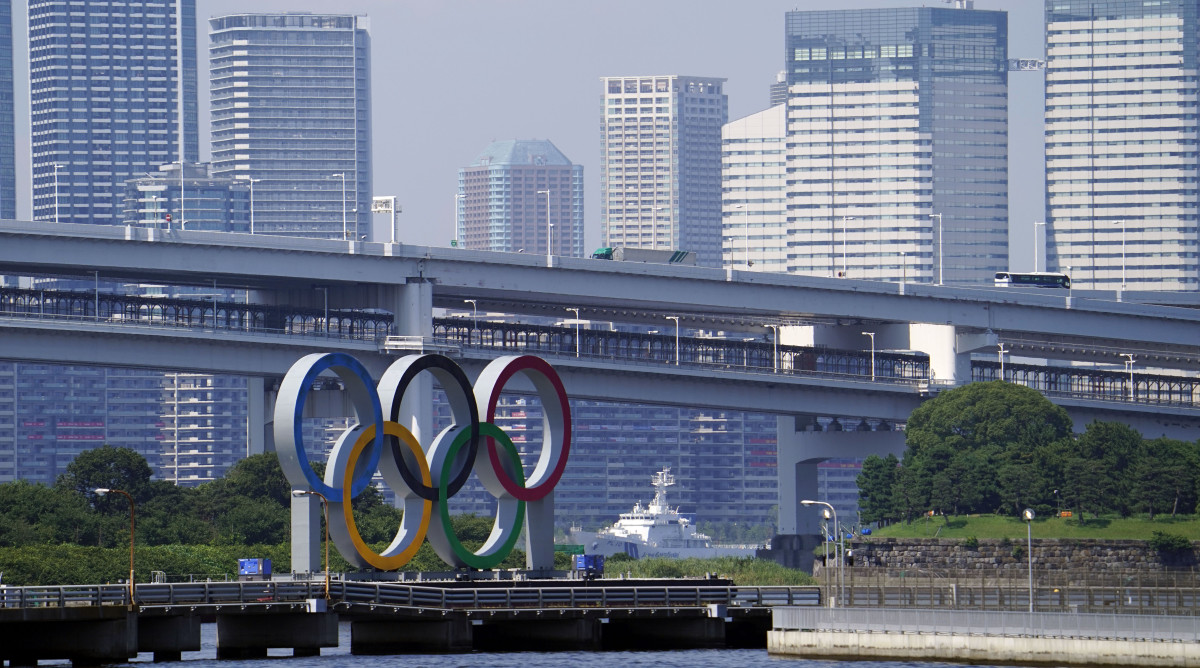What Are the COVID-19 Protocols Really Like at the Tokyo Olympics?

Sign up for our free daily Olympics newsletter: Very Olympic Today. You'll catch up on the top stories, smaller events, things you may have missed while you were sleeping and links to the best writing from SI’s reporters on the ground in Tokyo.
TOKYO — Welcome to Tokyo 2020. We are not allowed to see Tokyo, and it’s no longer '20, but the International Olympic Committee is still calling these the '20 Games, presumably because that’s when the COVID-19 protocols in operation here were designed.
The official slogan of these Olympics is “United by Emotion,” but the unofficial one is “Separated By Meaningless Plastic Barriers,” which organizers apparently bought in bulk last year. Reporters are packed onto buses shoulder-to-shoulder but are forbidden from sharing a taxi. We can loiter on the sidewalk outside our hotels for only 15 minutes, but we can linger together in clumps indoors in the lobby or Main Press Center for as long as we’d like. So far, I have taken four COVID-19 tests (two at home, two after arrival), but nobody has asked whether I have been vaccinated.
At my hotel, there is a nice gentleman whose job appears to be getting up from his seat to press the elevator button, then sighing when the wrong elevator door opens. “Regular” hotel guests must use one elevator, Olympics folks must use the other two, but the button makes no such distinction. Of course, when five people jam into an elevator together, nobody seems to care.

If you have ever had the dream that it’s the last day of the semester and you forgot to study for exams, this is the real-life equivalent. Most of what we learned about the coronavirus in the last year seems to have been forgotten here. Visitors jump through a lot of hoops—unless they don’t feel like jumping, at which point they can lower the hoops and crawl through them, and if that doesn’t work, they can toss the hoops aside, as long as they only toss one at a time. The operating principle seems to be that as long as protocols are time-consuming or voluminous, they must work.
The tests here involve spitting into tiny plastic vials. There are explicit instructions on how to spit, in case you have never seen a baseball game, and even more explicit instructions—accompanied by an illustration—not to urinate into the tiny plastic vial, though, frankly, anybody who could do that successfully deserves a medal.
Instructions for visiting media ask us to take the unprecedented step of following “good hygiene practice.” Staging a multibillion-dollar event that hinges on sports reporters following “good hygiene practice” is like a building a spaceship that requires beluga whales to eat with a knife and fork, but here we are, and also: The hand-dryers in the restrooms have been disabled because of COVID-19, but there are no paper towels to replace them. Anybody determined to practice “good hygiene” must wear absorbent pants.
Every silly and illogical “safety measure”—frequent hand-sanitizing but absolutely no physical distancing—fuels the sense that these Olympics will be a superspreader event. But that might be wrong. It is quite possible that the combination of vaccinated visitors, mandatory testing and masking will mitigate the spread of COVID-19.
What the protocols in Tokyo really mean are that people here are worried. Calling the hosts nervous is an understatement. Our instructions say, “The people of Japan will be paying close attention to your every move as you participate in the Games,” which will be helpful if I lose my keys. It’s also quite flattering. I have never had an entire populace spy on me before. Visiting media can bypass the country’s 14-day mandatory quarantine for visitors because we are an “essential part of the Games,” which puts me ahead of the surfers. And yet I still get the lingering sensation that nobody wants me here, perhaps because nobody wants me here. The Japanese people have spoken, and what they have said is, “We wish you weren’t here.” They are, one might say, united by emotion.
Only 30.8% of the Japanese population has received at least one dose of a COVID-19 vaccine. Infection and hospitalization rates are rising. The Olympics are so unpopular here that Toyota, the country’s largest corporation, just pulled its advertising for fear of contaminating its image.

This week, Tokyo 2020 CEO Toshiro Muto allowed for the possibility that the Olympics still might be canceled. There is no real chance of cancellation now, but Muto took the politically safe position. The Japanese’s fear is understandable, even if some of their protocols aren’t. There is also a very real possibility that many visitors will contract COVID-19 here but won’t realize it until they get home, which would mean that the Olympics could transmit COVID-19 to 205 countries, a development that the IOC sincerely hopes does not limit future bribes.
As a fully vaccinated person who will do my very best not to get the coronavirus, I feel like an uninvited dinner guest who promises to wash the dishes. Nice gesture, but I’m still not wanted. Of course, a lot of people have felt unwelcome at the Olympics, for various reasons, from Jesse Owens to Ben Johnson to recent Russians. My sin is existing, an affliction that I admit has bothered me for years.
The Olympics are often a mess, though usually for less obvious reasons: wasteful public spending, illicit drug use, a dubious bid process. The athletes almost always rescue the event from itself. Let’s just hope that years from now, we remember the Tokyo Games for the heights that were reached instead of the lives that were lost.
